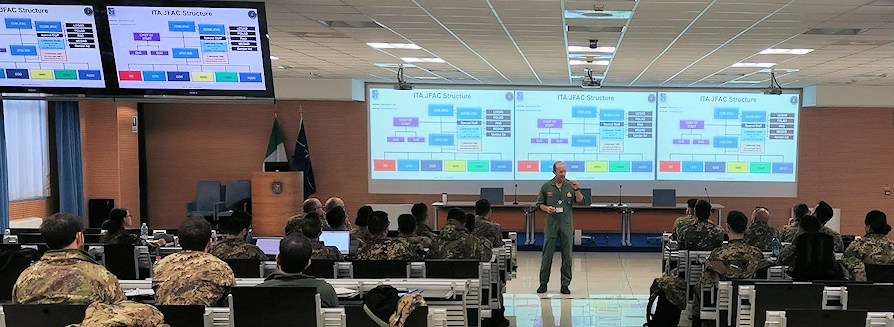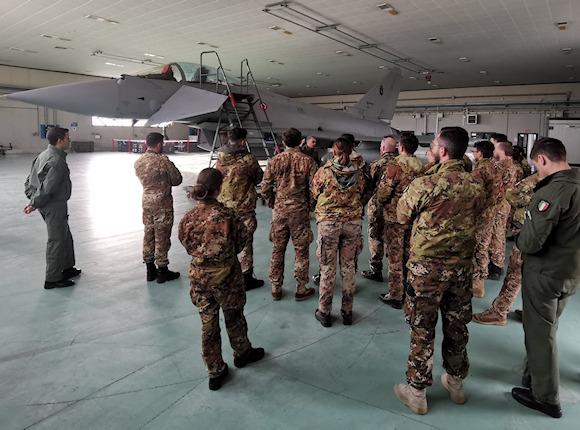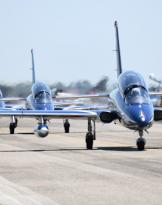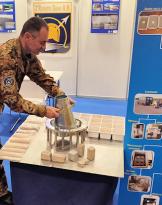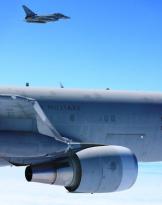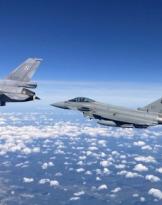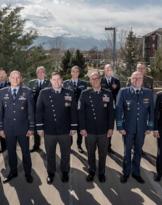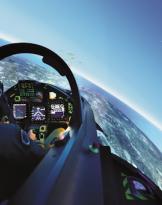The 90th edition of the "Operational Information Officers" course (A.I.O.) took place for the first time in an itinerant form at the offices of the aerospace operations command (COA) of Poggio Renatico, of the aerocooperation school (SAC) of Guidonia and of the 9th ISTAR-EW air brigade of Pratica di Mare.
The new format allowed attendees to live a complete and engaging training experience, interfacing with the most expert instructors of the Armed Forces and visiting the main organizational elements with which they will interact throughout their careers (COVI, COFS, COA, CII , CITS, Stormi di Volo, CIGA and ReSTOGE) in order to increase the effectiveness of the lessons and the general understanding of aerospace operations and the ISTAR-EW sector.
In accordance with the reference directives published by the Air Force General Staff, the course is aimed at Air Force personnel who begin their professional career in the intelligence sector, belonging to the "Operations" category and "Information and Security" specialty for officers and "Information and Cyber Operations” for non-commissioned officers, non-commissioned officers and the ranks.
The AIO course represents the conclusion of a training course lasting a total of approximately five months, consisting of specialist in-depth modules in the intelligence, ISR, electronic warfare, remote sensing and recognition of air, land and naval weapons systems.
This process has the aim of providing the selected personnel with the main tools to best carry out their information tasks at the various levels of employment (e.g. support for flight departments, specialized departments, intermediate commands and operational commands), in the different phases of the Intelligence cycle and ISR processes. Once the "intelligence" qualification has been acquired at the end of the training process, the staff carries out a period of on-the-job training (OJT) at the assigned department before being able to be deployed operationally.
The teaching activity, planned and coordinated by the ISTAR-EW office of the CSA, was carried out by teachers and instructors and coming from FA and joint forces bodies such as the Defense General Staff (SMD), the Air Force General Staff (SMA), the Joint Forces Operational Command (COVI), the Joint Forces Command for Special Forces Operations (COFS), the Aerospace Operations Command (COA), the Joint Intelligence Center (CII), the Tactical Information Brigade (BIT) of the Italian Army, the 9th ISTAR-EW air brigade, the joint satellite remote sensing center (CITS), as well as subject matter expert coming from the CSA departments (4th wing, 14th wing, 17th wing, RACSA, ReSTOGE and CIGA) and the logistics command (ReSIA and ReGISCC). The contents of the course, the exercise phases and the teaching methodology have been updated on the basis of the technological and geostrategic evolutions of recent months, as well as the feedback reported by attendees of previous editions.
The further innovations introduced in the just concluded edition concern the fact-finding visits to Armed Forces and Joint Forces bodies, the introduction of interventions regarding communication techniques and the public speaking, lessons and insights in the cyber and aerospace sectors, as well as interventions by national intelligence personnel employed abroad at NATO, European Union commands and in the Theaters of Operation. For the first time, the final exercise carried out at the end of the teaching activities was carried out with the support of the Janes company which made its platform available to attendees. Open Source Intelligence and the IT tools to carry out the tasks required by the exam tests based on the reference scenarios assigned to the individual working groups.
The intervention carried out by the US intelligence personnel of the 31st was particularly effective and appreciated fighter wing of Aviano. The US personnel provided a complete and in-depth description of the tasks and responsibilities of the intelligence personnel in the U.S. airborne departments. Air Force (USAF), sharing interesting considerations regarding the training courses and personal experiences lived in the field during the numerous operational deployments. This intervention, strongly shared by the US military authorities, marked the beginning of a new and important collaboration in the training field aimed at further increasing the training paths, the interoperability of the ISR systems and the standardization of the procedures.
